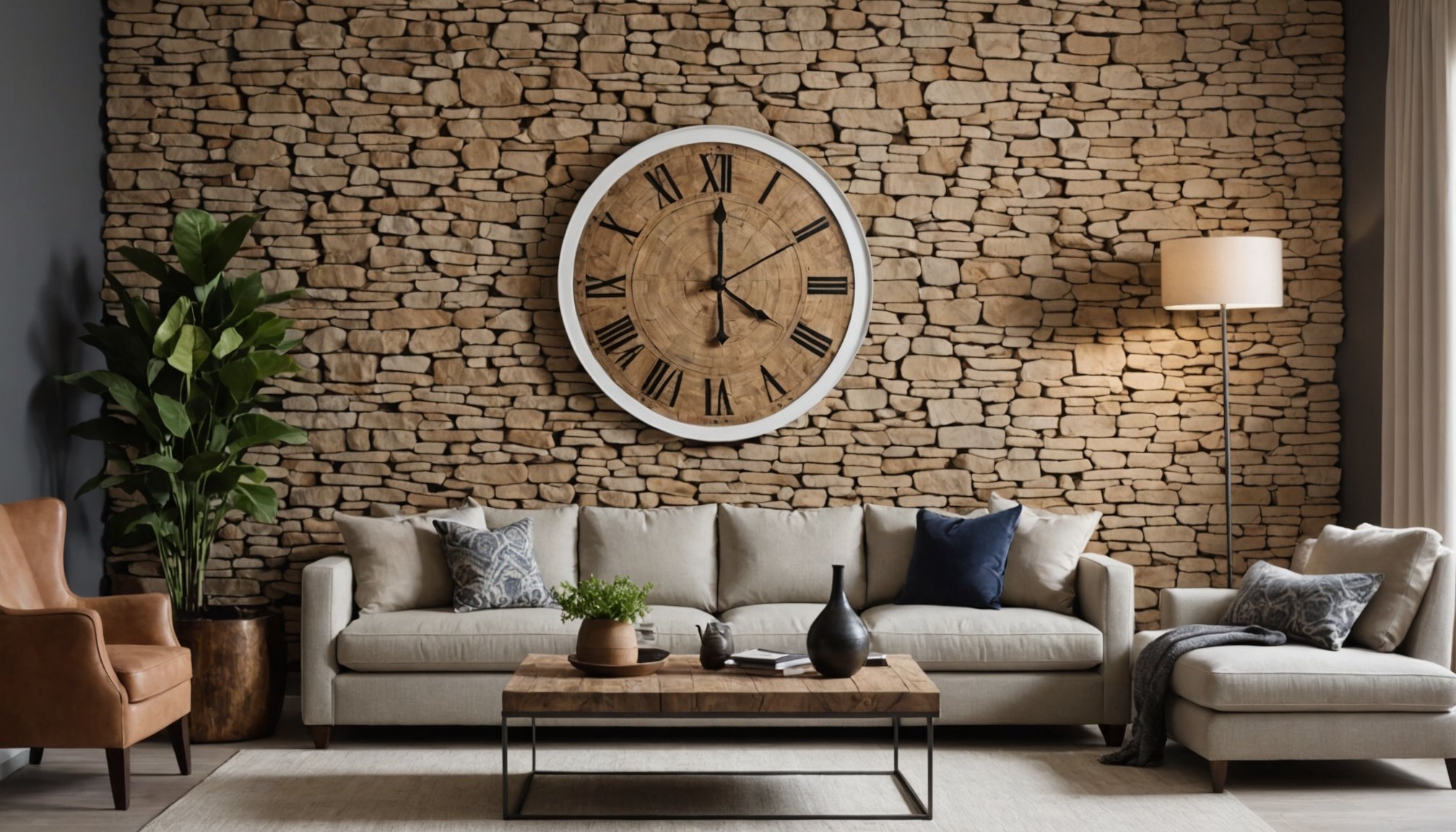Types of Natural Materials to Transform Your Home
When considering home décor transformation, incorporating natural materials can make a substantial impact. These materials not only enhance aesthetic appeal but also promote sustainability and eco-friendliness.
Wood: Versatile and Timeless
Wood is a highly versatile material, offering benefits across various design styles. It remains timeless and can seamlessly fit into both modern and rustic aesthetics. Different wood types such as oak, walnut, and pine each bring unique characteristics, enhancing the overall look of a space. Maintaining wooden furnishings requires regular dusting and conditioning to preserve their natural beauty.
Topic to read : Transform your space into the perfect yoga retreat: essential tips for maximum comfort and mindfulness
Stone: Enduring and Elegant
Stone elements add durability and elegance to home décor. From marble to granite, the choice of stone can transform interiors significantly. Stones can be integrated into floors, countertops, and wall accents, serving as a focal point in both contemporary and traditional homes.
Textiles: Adding Warmth and Texture
Natural textiles like cotton, linen, and wool can significantly contribute to a cozy atmosphere. Layering these materials introduces warmth and texture into a space. Opting for sustainable textile options aligns with eco-friendly practices, ensuring that your home décor is both stylish and environmentally conscious.
Have you seen this : Conquering stress: effective strategies for success in high-pressure business negotiations
Benefits of Embracing Natural Materials in Home Décor
Incorporating natural materials into home décor not only elevates aesthetic appeal but also promotes a sustainable lifestyle. These elements bring unique textures and visual interest, creating a warm and inviting atmosphere. When embracing these materials, one of the core benefits is the sustainability in décor they offer. Natural resources are renewable and often have a lower environmental impact during production, making them excellent choices for eco-conscious individuals.
Beyond their environmental advantages, natural materials contribute to healthier indoor spaces. For instance, incorporating materials like wood or natural textiles can enhance indoor air quality by reducing volatile organic compounds often found in synthetic materials. This leads to an environment that supports both well-being and style.
Lastly, the aesthetic appeal of natural materials is undeniably striking. Each piece possesses unique characteristics, from intricate grain patterns in wood to the rich textures of stone, offering endless design possibilities. By choosing natural elements, homeowners can enjoy beautiful, sustainable spaces that reflect a commitment to environmental preservation and personal health. These benefits make natural materials an invaluable part of any home transformation journey.
Design Ideas for Incorporating Natural Materials
When envisioning a home filled with natural materials, understanding home décor ideas is crucial. Mixing and matching different textures like wood, stone, and textiles can elevate interior spaces significantly. A design inspiration that embodies this is the use of stone countertops juxtaposed with soft linen curtains, creating a balance between sophistication and comfort.
Incorporating nature-inspired elements such as indoor plants or wooden accents can enhance the overall aesthetic and bring a touch of the outdoors in. Case studies often highlight the success of blending materials to achieve a harmonious environment. For example, a room featuring a stone fireplace with wooden beams overhead showcases a rustic charm while maintaining modern elegance.
Visual examples are particularly useful in sparking design creativity. Spaces that emphasize natural elements often utilize large windows for natural light, complemented by earthy tones and textures for a cohesive look. This approach not only adds visual appeal but also promotes a serene and inviting atmosphere.
By drawing on these ideas, homeowners can create stunning interiors that reflect personal style and a deep appreciation for nature’s beauty.
Practical Tips for Sourcing Natural Materials
Sourcing natural materials for home décor requires careful consideration to ensure both quality and sustainability. For those embarking on this transformative journey, understanding where and how to source natural materials can greatly influence the final result.
Finding Reputable Suppliers
When selecting reputable suppliers, consider those committed to eco-friendly practices. Look for certifications such as FSC (Forest Stewardship Council) for wood or GOTS (Global Organic Textile Standard) for natural textiles, which indicate sustainable sourcing methods. Online platforms and local markets often list such certifications, helping you find sustainable sources effectively.
Upcycling and Repurposing
Consider exploring upcycling opportunities. Repurposing materials like reclaimed wood or vintage textiles can not only add unique flair to your décor but also emphasise sustainability. These practices facilitate incorporating character and history into your home while being environmentally friendly.
Budget-Friendly Alternatives
For those mindful of costs, seeking budget-friendly alternatives is key. Options such as bamboo or cork can provide a natural element while remaining accessible price-wise. Prioritising their use in key renovations ensures alignment with eco-conscious goals without overshadowing the budget.
Maintaining Natural Materials in Home Décor
When it comes to the maintenance of natural materials, knowing the right practices can preserve the beauty and longevity of your décor. Consistent care ensures your home remains both inviting and eco-friendly.
Common Maintenance Routines
Each material type demands its own set of upkeep routines. For wood, regular dusting and conditioning are crucial to prevent wear. Stone surfaces benefit from gentle cleaning with pH-neutral products to avoid damage. Similarly, natural textiles require caring methods, such as vacuuming and occasional washing, to maintain their texture and softness.
Protecting and Preserving Natural Finishes
Protecting natural finishes is essential to keeping your décor pristine. Applying protective seals on wood and stone can guard against scratches and stains. Avoid direct sunlight on textiles to prevent fading, which can alter their unique characteristics.
Eco-Friendly Cleaning Products
Opting for eco-friendly cleaning products contributes to sustainability in home care. These products minimise environmental impact while effectively maintaining materials. Look for biodegradable options free of harsh chemicals, ensuring that your home’s atmosphere remains healthy and toxin-free. These small yet impactful decisions help conserve natural beauty and support a sustainable home environment.








